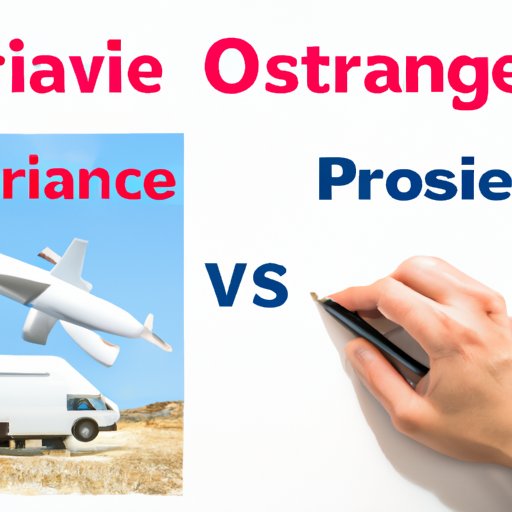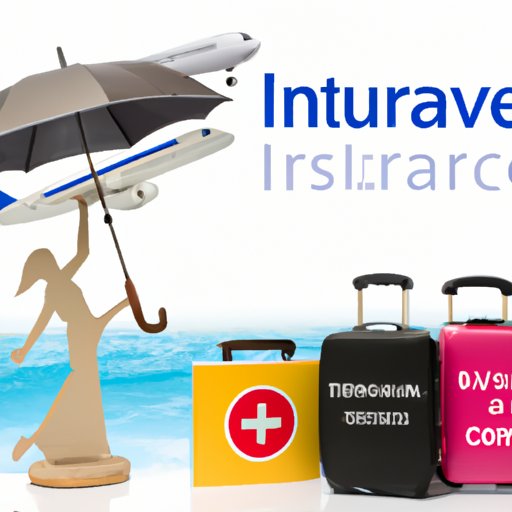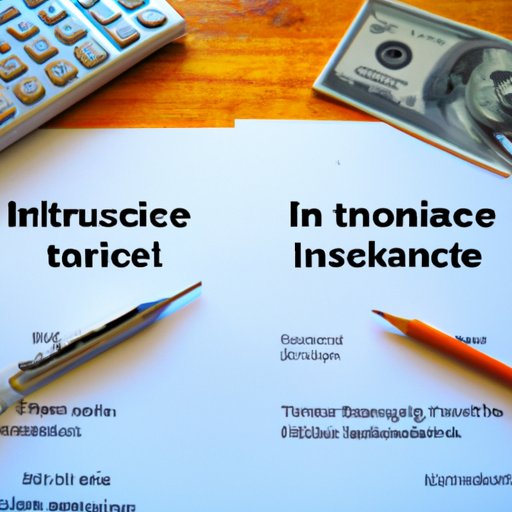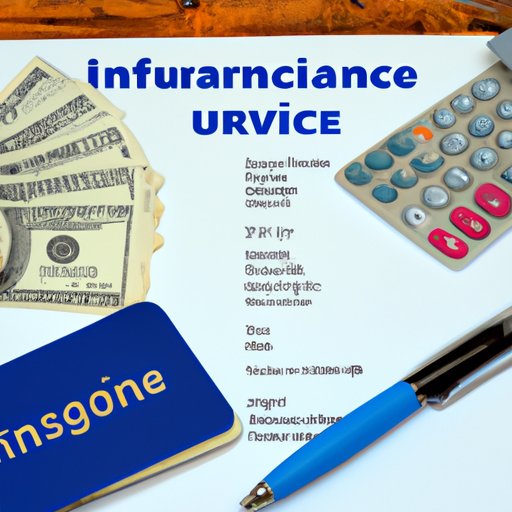Introduction
The purpose of this article is to explore when it’s best to buy travel insurance. We’ll look at the pros and cons of purchasing travel insurance, the different types of coverage available, and the benefits of buying a policy. We’ll also examine the factors you should consider when deciding whether to buy a policy, and compare the cost of travel insurance with the cost of medical expenses on a trip. This article is intended for travelers looking for advice on when to buy travel insurance.

Evaluating the Pros and Cons of Travel Insurance
Buying travel insurance can be a smart move for many travelers, but there are both advantages and disadvantages to consider before making a purchase. According to the U.S. Travel Insurance Association (USTIA), “Travel insurance is designed to cover financial and medical expenses and other losses incurred while traveling, either within one’s own country, or internationally.”
Advantages of Buying Travel Insurance
The primary benefit of travel insurance is that it provides financial protection in the event of an unforeseen medical emergency. In addition, most policies offer coverage for trip cancellations, delays, lost luggage, and theft. Depending on the type of plan you purchase, you may also receive coverage for hazardous sports activities and rental car damage.
Disadvantages of Buying Travel Insurance
One potential disadvantage of travel insurance is that some policies may not cover pre-existing medical conditions or natural disasters. Additionally, some policies may not provide coverage if you fail to disclose certain information about your trip. Lastly, depending on the type of policy you purchase, you may not be able to make changes to your itinerary without incurring additional fees.

Understanding the Different Types of Travel Insurance Coverage
Travel insurance policies generally fall into three categories: trip cancellation, medical, and baggage/personal items. Each type of policy offers different levels of coverage, so it’s important to understand the differences before making a purchase.
Overview of the Different Types of Coverage
Trip cancellation policies provide coverage for non-refundable deposits and payments if you need to cancel your trip due to illness, injury, or a family emergency. Medical policies provide coverage for unexpected medical expenses while traveling, including doctor visits, hospital stays, and medication. Baggage/personal items policies provide coverage for lost or stolen items, such as cameras, laptops, and jewelry.
Explaining Each Type of Coverage
Trip cancellation policies typically cover up to 100% of the cost of a trip, depending on the level of coverage purchased. Medical policies usually cover up to $1 million in medical expenses, although some policies may offer higher limits. Baggage/personal items policies typically cover up to $1,000 per item and up to $3,000 total, depending on the policy.
Exploring the Benefits of Buying Travel Insurance
Travel insurance can provide financial protection in case of a medical emergency, cancellation/delay coverage, and lost luggage/theft coverage. Here are some of the key benefits of buying a policy:
Financial Protection in Case of a Medical Emergency
In the event of a medical emergency, travel insurance can provide coverage for doctor visits, hospital stays, medications, and medical evacuation. Without a policy, these expenses could easily add up to thousands of dollars.
Cancellation/Delay Coverage
If you need to cancel your trip due to illness, injury, or a family emergency, a trip cancellation policy will provide coverage for non-refundable deposits and payments. It can also provide coverage for flight delays and missed connections.
Lost Luggage/Theft Coverage
A baggage/personal items policy can provide coverage for lost or stolen items, such as cameras, laptops, and jewelry. This type of policy can also provide coverage for accidental death or dismemberment while traveling.
Examining When You Should Purchase Travel Insurance
The best time to purchase travel insurance is before or after booking your trip. Some policies may not provide coverage if you wait too long to buy a policy, so it’s important to purchase as soon as possible. If you’re traveling to a high-risk area, such as a country experiencing political unrest or a region prone to natural disasters, it’s a good idea to purchase a policy before your departure date.
If you have a pre-existing condition, it’s important to purchase a policy that includes coverage for medical expenses related to the condition. Some policies may not provide coverage for pre-existing conditions, so it’s important to read the fine print before purchasing a policy.
Analyzing What Factors to Consider When Deciding Whether to Buy Travel Insurance
When deciding whether to purchase a travel insurance policy, there are several factors to consider. These include the cost of the policy, the type of trip you’re taking, and the amount of coverage you need. Here’s a closer look at each factor:
Cost of the Policy
Travel insurance policies vary in cost, depending on the type of coverage you purchase and the length of your trip. Generally speaking, the longer the trip, the more expensive the policy.
Type of Trip You’re Taking
The type of trip you’re taking can also affect the cost of the policy. For example, a trip to a high-risk area may require a more comprehensive policy with higher levels of coverage.
Amount of Coverage You Need
Lastly, it’s important to consider the amount of coverage you need. If you’re traveling with expensive electronics or jewelry, it may be worth purchasing a policy with higher levels of coverage.

Comparing Cost of Travel Insurance vs. Cost of Medical Expenses on Trip
It’s also important to consider the cost of travel insurance versus the cost of medical expenses on a trip. Here’s a closer look at both:
How Much Does Travel Insurance Cost?
The cost of travel insurance varies, depending on the type of coverage you purchase and the duration of your trip. Generally speaking, the cost of a basic policy ranges from 5-10% of the total cost of the trip. However, some policies may cost as much as 20% of the total cost of the trip.
How Much Do Medical Expenses Cost on a Trip?
The cost of medical expenses on a trip can vary greatly, depending on the severity of the situation. According to the USTIA, the average cost of an emergency room visit is $1,500, and the average cost of an air ambulance flight is $25,000. Without travel insurance, these expenses can quickly add up to thousands of dollars.
Conclusion
In conclusion, travel insurance can provide financial protection in case of a medical emergency, cancellation/delay coverage, and lost luggage/theft coverage. When deciding whether to purchase a policy, it’s important to consider the cost of the policy, the type of trip you’re taking, and the amount of coverage you need. Additionally, it’s important to compare the cost of travel insurance with the cost of medical expenses on a trip, as the latter can quickly add up to thousands of dollars. All things considered, travel insurance can be a smart purchase for many travelers.
(Note: Is this article not meeting your expectations? Do you have knowledge or insights to share? Unlock new opportunities and expand your reach by joining our authors team. Click Registration to join us and share your expertise with our readers.)
